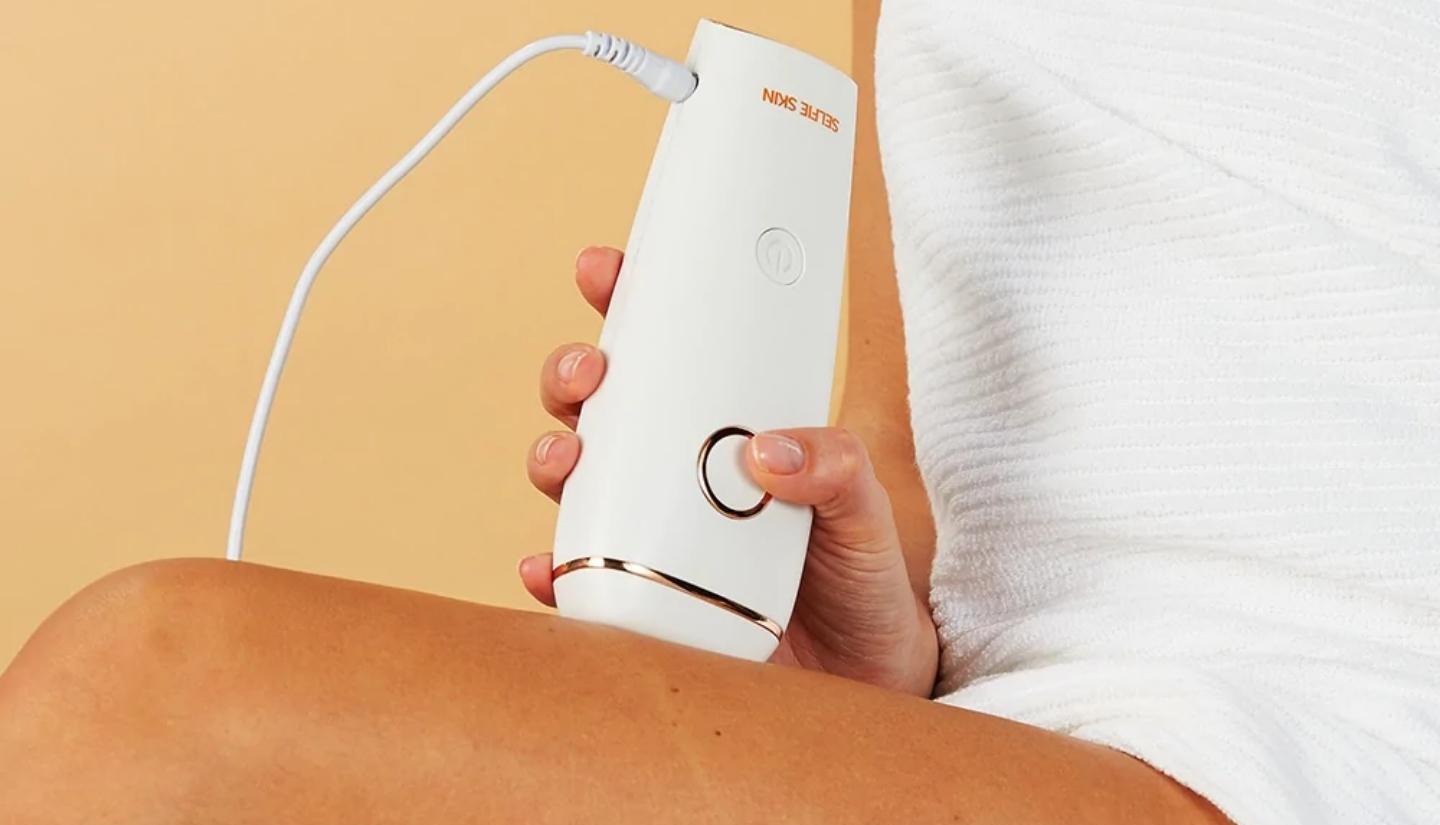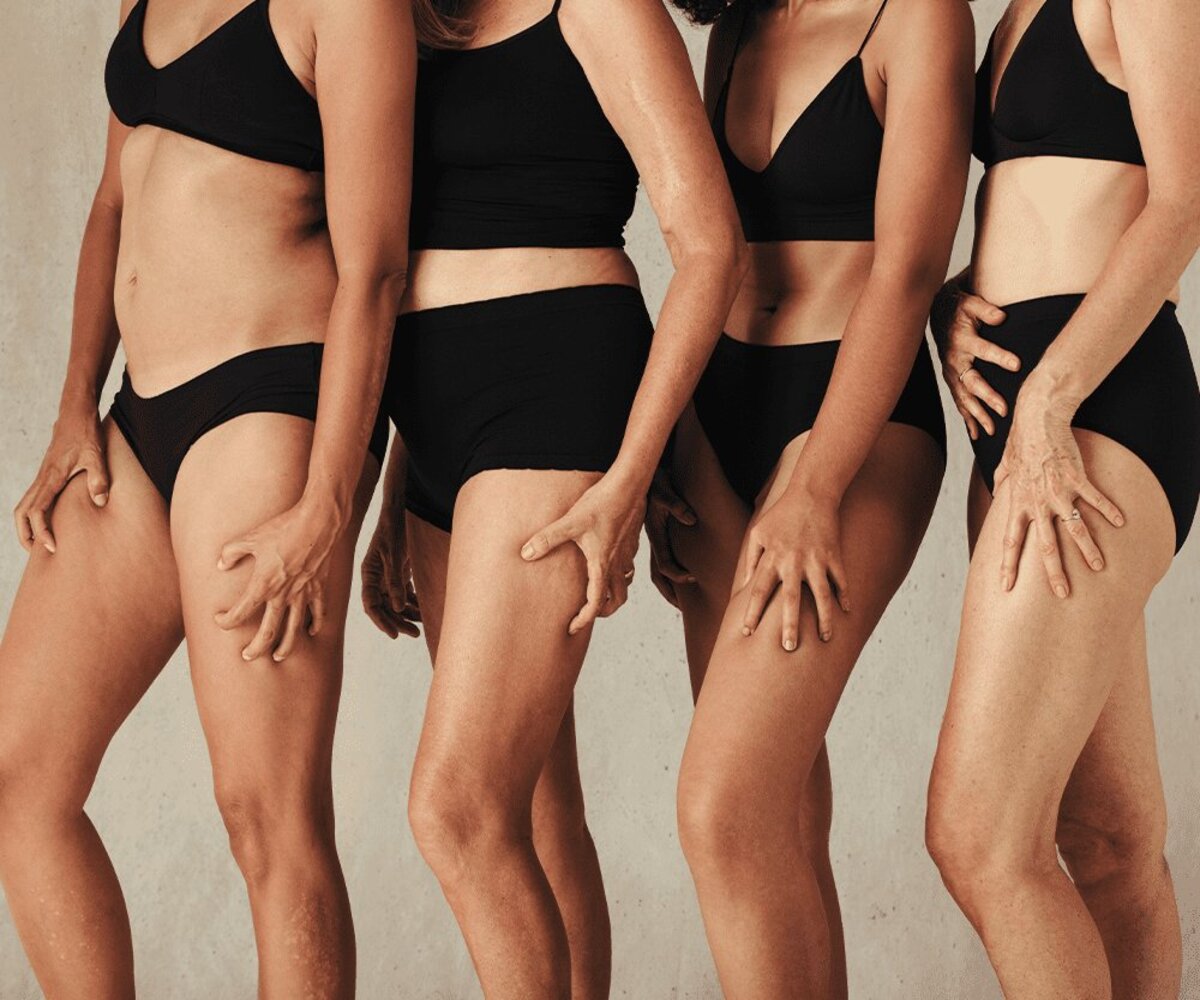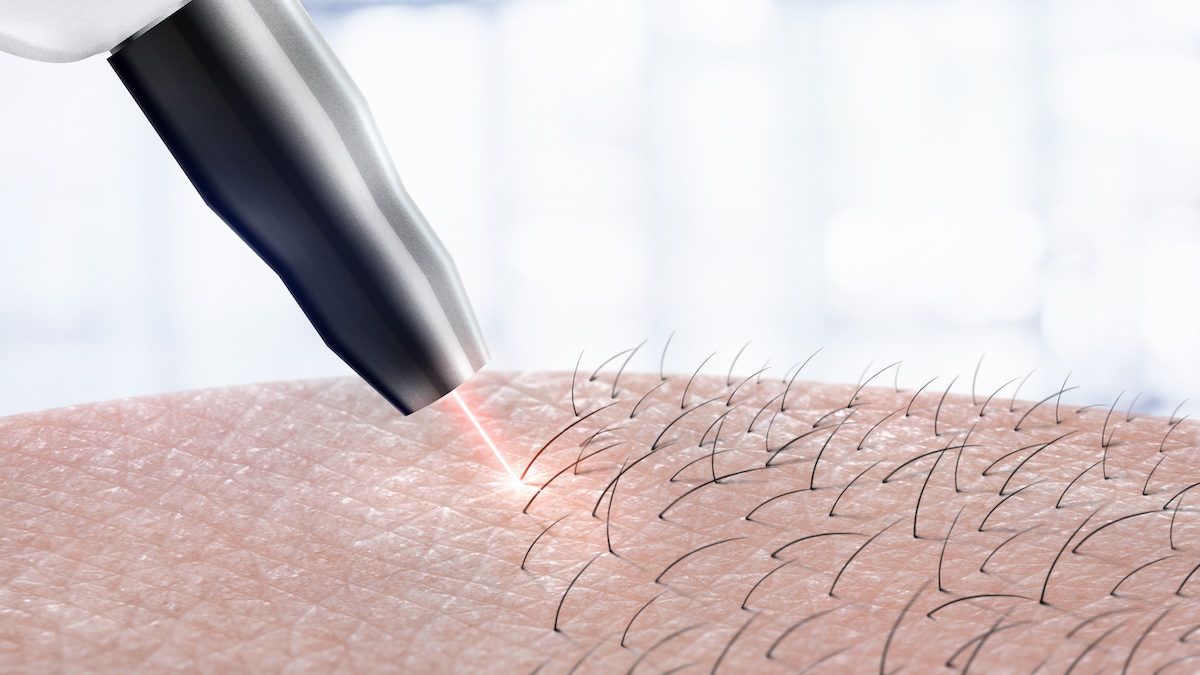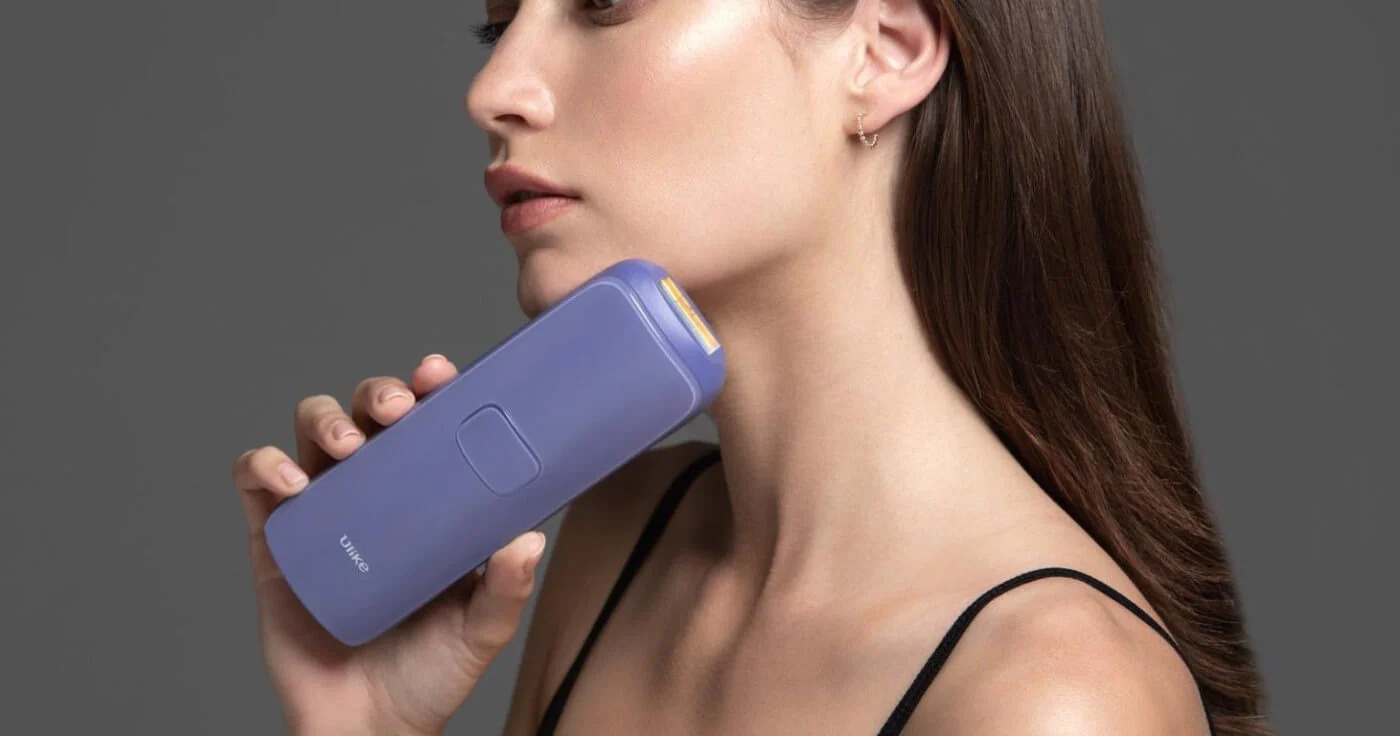Home>Latest Posts>How Long Does IPL Laser Hair Removal Last


Latest Posts
How Long Does IPL Laser Hair Removal Last
Modified: August 5, 2023
Discover how long IPL hair removal lasts for women. Find out the duration and effectiveness of this popular hair removal method.
(Many of the links in this article redirect to a specific reviewed product. Your purchase of these products through affiliate links helps to generate commission for Under-tec.com, at no extra cost. Learn more)
Table of Contents
Introduction
Unwanted hair can be a hassle for many women, impacting their confidence and self-esteem. Fortunately, there are various methods of hair removal available, with Intense Pulsed Light (IPL) being one of the most popular and effective options. IPL hair removal offers a long-lasting solution that targets hair follicles, resulting in smoother and hair-free skin.
Understanding how long IPL hair removal lasts is essential for those considering this treatment. By having a clear idea of the duration and factors influencing the process, individuals can make informed decisions about whether IPL is the right choice for their hair removal needs.
In this article, we will delve into the details of IPL hair removal, exploring the factors that affect its duration and the number of sessions required for optimal results. We will also discuss maintenance sessions and the longevity of IPL hair removal outcomes.
So, if you’re tired of constant shaving, waxing, or plucking, and are seeking a more permanent solution for hair removal, read on to discover the ins and outs of IPL.
Understanding IPL Hair Removal
Intense Pulsed Light (IPL) hair removal is a non-invasive procedure that uses broad-spectrum light to target hair follicles. The light energy is absorbed by the melanin pigment in the hair, which converts it into heat. This heat then damages the hair follicles, inhibiting future hair growth.
Unlike traditional methods like shaving and waxing, which only remove hair from the surface, IPL penetrates deeper into the skin, providing more long-lasting results. It is suitable for removing hair from various areas of the body, including the legs, underarms, bikini line, face, and arms.
It is important to note that IPL is most effective on dark hair and fair to medium skin tones. This is because the contrast between the hair and skin allows the IPL device to specifically target the hair follicles without affecting the surrounding skin.
Before undergoing an IPL hair removal treatment, it is crucial to have a consultation with a trained professional who will assess your skin type, hair color, and medical history. They will determine whether you are a suitable candidate for the procedure and tailor the treatment accordingly.
IPL hair removal is generally well-tolerated, with minimal discomfort. Some individuals may experience a mild sensation similar to the snapping of a rubber band during the treatment, but it is usually tolerable and temporary. The number of sessions required for optimal results can vary depending on several factors, which we will discuss in the next section.
Factors Affecting IPL Hair Removal Duration
Several factors can influence the duration of IPL hair removal and the number of sessions required for satisfactory results. Understanding these factors can help manage expectations and ensure optimal outcomes. Let’s take a closer look at some of the key factors:
- Hair color and thickness: Generally, IPL is most effective on dark, coarse hair. The melanin pigment in the hair absorbs the light energy, facilitating the destruction of the hair follicles. Lighter hair colors, such as blonde, red, or gray, may not respond as well to IPL treatments.
- Skin tone: Darker skin tones have more melanin, which increases the risk of the surrounding skin absorbing the IPL light and can cause skin damage. IPL treatments are typically more effective on fair to medium skin tones, as the contrast between the hair and skin allows for better targeting of the hair follicles while minimizing the risk of adverse reactions.
- Hormonal factors: Hormonal imbalances, such as those caused by conditions like polycystic ovary syndrome (PCOS), can affect hair growth patterns. In such cases, multiple sessions may be required to address varying levels of hair growth and to achieve optimal results.
- Treatment area: Different areas of the body have varying hair growth cycles. Some areas, like the legs, have longer hair growth cycles, while others, like the upper lip, have shorter cycles. The hair growth phase is an important consideration as IPL targets hair follicles in the active growth phase. Multiple sessions are often needed to treat all hair follicles during their active growth phase.
- Consistency of treatment: Adhering to the recommended treatment schedule plays a significant role in achieving desired outcomes. Consistent sessions allow for systematic hair follicle destruction, leading to long-lasting results. Deviating from the recommended timeline may result in delayed or suboptimal outcomes.
It’s important to consult with a qualified practitioner to assess these factors and determine the appropriate treatment plan for your specific needs. They will be able to provide personalized advice and guidance based on your unique circumstances.
Typical Duration of IPL Hair Removal Sessions
The duration of each IPL hair removal session can vary depending on several factors, including the size of the treatment area and the density of hair. While individual treatment times may differ, here is a general guideline for the typical duration of IPL hair removal sessions:
- Small areas: Small areas, such as the upper lip or underarms, usually take around 10 to 15 minutes per session. These areas have fewer hair follicles, allowing for quicker treatment.
- Medium areas: Medium areas, like the bikini line or forearms, may require approximately 20 to 30 minutes per session. These areas have a moderate density of hair that needs to be treated.
- Large areas: Larger areas, such as the legs or back, generally take longer to treat. On average, a full leg treatment can range from 45 minutes to an hour per session.
It’s important to note that these durations are estimates and can vary based on individual factors, including the technician’s experience and the IPL device used. Additionally, the aforementioned times only include the time spent on the actual treatment and do not account for pre-treatment preparations or post-treatment care.
During the IPL hair removal session, a handheld device emitting pulses of light is passed over the targeted area. The device delivers controlled bursts of light that penetrate the skin and target the hair follicles. Some devices feature a cooling mechanism that helps minimize discomfort during treatment.
Before undergoing the procedure, it is essential to have a thorough consultation with a trained professional. They will assess your hair type, skin tone, and desired outcome to determine the appropriate energy settings and treatment plan for you.
It’s worth mentioning that IPL hair removal is not a one-time fix. Multiple sessions are typically required to achieve the desired results. The number of sessions needed will be discussed in the next section.
Number of Sessions Required for Permanent Results
IPL hair removal is a gradual process that requires multiple sessions to achieve the desired level of permanent hair reduction. This is because hair grows in different phases, and IPL targets hair follicles that are in the active growth phase.
On average, individuals may require anywhere from 6 to 12 sessions for optimal and long-lasting results. However, the exact number of sessions varies depending on several factors:
- Hair type and color: Dark, coarse hair typically responds better to IPL treatments compared to lighter hair colors. Individuals with dark hair may require fewer sessions compared to those with lighter or finer hair.
- Skin tone: Fair to medium skin tones tend to have better outcomes with IPL hair removal. Darker skin tones require specialized IPL devices that are safe and effective for their specific skin type, which may result in additional sessions.
- Treatment area: Each area of the body has different hair growth patterns and cycles. Some areas might require more frequent sessions, while others may require fewer. The professional performing the treatment can determine the optimal treatment plan based on these factors.
- Hormonal factors: Hormonal imbalances, such as those caused by pregnancy or conditions like PCOS, can affect hair growth. In such cases, additional sessions may be required to treat new hair growth that occurs during and after hormonal changes.
The sessions are typically scheduled at intervals of 4 to 6 weeks apart. This allows enough time for the hair in the treatment area to grow and enter the active growth phase for effective IPL targeting.
It’s important to understand that IPL hair removal does not provide permanent hair removal but rather permanent hair reduction. This means that while the treated hair follicles are permanently disabled, new follicles can still develop over time due to factors such as hormonal changes or aging.
By completing the recommended number of sessions and following the maintenance and aftercare guidelines, individuals can expect a significant reduction in hair growth. It’s crucial to consult with a qualified professional to create a personalized treatment plan that addresses your specific needs and ensures long-lasting results.
Maintenance Sessions for Long-Term Hair Removal
After completing the recommended number of initial sessions for IPL hair removal, maintenance sessions are crucial for achieving long-term hair reduction. The purpose of maintenance sessions is to target any new hair growth and ensure that the results achieved from the initial sessions are maintained over time.
The frequency of maintenance sessions can vary depending on individual factors, including hair growth patterns and hormonal changes. However, it is generally recommended to have a maintenance session every 6 to 12 months.
During these maintenance sessions, any new hair growth that has occurred since the initial treatment will be targeted and treated using IPL. Although the number of maintenance sessions required is typically less than the initial sessions, consistent follow-up appointments are necessary to sustain the results.
In addition to maintenance sessions, a proper at-home hair care routine can also contribute to long-term hair reduction. This routine may include regular exfoliation to prevent ingrown hairs, avoiding excessive sun exposure, and using moisturizers and sunscreens to protect the skin.
It’s important to note that results may vary from person to person. Factors such as hormonal changes, age, and genetics can influence hair growth and may require more frequent maintenance sessions for some individuals.
Consulting with a qualified professional who specializes in IPL hair removal is essential in determining the ideal frequency and number of maintenance sessions required for your specific needs. They can evaluate your progress, assess any changes in hair growth patterns, and make necessary adjustments to your treatment plan.
By consistently attending maintenance sessions and following a proper hair care routine, individuals can enjoy long-term hair reduction and smoother skin for an extended period.
Duration of IPL Hair Removal Results
One of the key benefits of IPL hair removal is its long-lasting results. While it does not provide permanent hair removal, IPL can significantly reduce hair growth and keep the treated area smooth for an extended period.
The duration of IPL hair removal results can vary among individuals and depends on several factors:
- Hair and skin type: The effectiveness of IPL is influenced by hair color, thickness, and skin tone. Individuals with darker, coarser hair and fair to medium skin tones tend to achieve better and longer-lasting results compared to those with lighter or finer hair.
- Number of sessions: Completing the recommended number of initial sessions is crucial for optimal results. Following the recommended treatment plan, including maintenance sessions, can ensure lasting hair reduction and prevent new hair growth.
- Hormonal changes: Hormonal fluctuations, such as those during pregnancy or menopause, can affect hair growth patterns. In some cases, new hair follicles may develop due to hormonal changes, necessitating additional maintenance sessions to maintain the desired results.
- Individual response: The way each individual’s body responds to IPL can also impact the duration of results. Some individuals may experience a longer period of hair reduction, while others may require more frequent maintenance sessions to sustain the desired outcome.
On average, individuals can expect a significant reduction in hair growth following the recommended number of sessions. The treated hair follicles are permanently disabled, leading to a prolonged period of smooth, hair-free skin.
However, it’s important to keep in mind that new hair follicles can develop over time due to factors like hormonal changes, aging, or new hair growth cycles. This is why maintenance sessions are essential for ongoing hair reduction and to prolong the results achieved through IPL.
By closely following the recommended treatment plan, attending maintenance sessions as advised, and adopting a proper at-home hair care routine, individuals can enjoy the benefits of IPL hair removal for an extended period.
It’s worth noting that individual results may vary, and it’s essential to consult with a qualified professional who can assess your specific case and provide personalized advice for maintaining the results of IPL hair removal.
Conclusion
IPL hair removal offers an effective solution for long-lasting hair reduction and smoother skin. Understanding the factors that influence the duration of IPL treatments and the number of sessions required is essential for individuals considering this method of hair removal.
By targeting the hair follicles with intense pulsed light, IPL inhibits future hair growth and provides a more permanent solution compared to traditional hair removal methods. However, it’s important to note that IPL does not guarantee complete and permanent hair removal.
The number of sessions required for optimal results can vary depending on factors such as hair color and thickness, skin tone, hormonal influences, treatment area, and consistency of treatment. Multiple sessions are typically required to target hair follicles in the active growth phase and achieve the desired level of permanent hair reduction.
Maintenance sessions and a proper at-home hair care routine play a crucial role in prolonging the results of IPL hair removal. Regularly scheduled maintenance sessions, along with following recommended aftercare practices, can help individuals maintain long-term hair reduction and smoother skin.
Individual experiences may vary, and it is important to consult with a qualified professional who can assess your specific needs and provide personalized advice. They will design a treatment plan tailored to your hair type, skin tone, and desired outcomes to help you achieve the best long-term results possible.
So, if you’re tired of dealing with unwanted hair and seeking a more permanent hair removal solution, IPL may be the right choice for you. Consult with a trained professional to learn more about IPL hair removal and start your journey to smoother, hair-free skin.










